|
|
|
Sort Order |
|
|
|
Items / Page
|
|
|
|
|
|
|
| Srl | Item |
| 1 |
ID:
105902
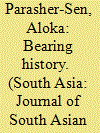

|
|
|
|
|
| Publication |
2011.
|
| Summary/Abstract |
The largely-prescriptive Jaina literary texts contained severe strictures on women that forbade them from undertaking sallekhana- (fasting to death) to attain spiritual liberation. However, fragmentary inscriptions written on stone slabs and pillars found in the Deccan indicate that women did undertake and experience this ritual practice. These records, written at the behest of those who took care of individuals going through sallekhana-, enable us to juxtapose these two sources to argue that there was a dynamic regional religious and social milieu which prevailed over the didactic and normative depictions of an apparently pan-Indian Jaina sensibility. The idea and practice of spiritual liberation during early medieval times in this case study of the Deccan thus illustrates the gender and institutional history of the Jaina faith in its regional and local dimensions.
|
|
|
|
|
|
|
|
|
|
|
|
|
|
|
|
| 2 |
ID:
001534
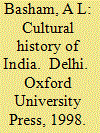

|
|
|
|
|
| Publication |
DelhI, Oxford Univ. Pr., 1998.
|
| Description |
x, 600p.: plates, mapspbk
|
| Standard Number |
0195639219
|
|
|
|
|
|
|
|
|
|
|
|
Copies: C:1/I:0,R:0,Q:0
Circulation
| Accession# | Call# | Current Location | Status | Policy | Location |
| 041095 | 954/BAS 041095 | Main | On Shelf | General | |
|
|
|
|
| 3 |
ID:
058150
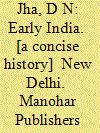

|
|
|
|
|
| Publication |
New Delhi, Manohar, 2004.
|
| Description |
269p.: ill., mapshbk
|
| Standard Number |
817304578X
|
|
|
|
|
|
|
|
|
|
|
|
Copies: C:1/I:0,R:0,Q:0
Circulation
| Accession# | Call# | Current Location | Status | Policy | Location |
| 049009 | 954.0101/JHA 049009 | Main | On Shelf | General | |
|
|
|
|
| 4 |
ID:
118872
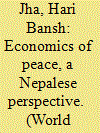

|
|
|
| 5 |
ID:
102168
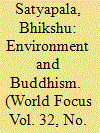

|
|
|
| 6 |
ID:
110385
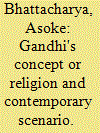

|
|
|
| 7 |
ID:
153646
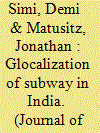

|
|
|
|
|
| Summary/Abstract |
This paper examines how Subway, the US fast food restaurant franchise, has adapted to Indian culture. Glocalization theory will be the guiding framework used in this analysis. Glocalization rests on the premise that a universal concept must change to fit and function in a local culture. Blending the local and the global, it provides a passage to empowerment where modifications to a particular commodity can make it prosper in various traditions. Four important themes of glocalization emerged from this analysis: (1) adjustment of restaurant ambience; (2) adoption of Jain values; (3) adjustment of advertising practices; and (4) adjustment of the use of social media. An important conclusion is that, although India is embracing modernity, Subway has honoured many religious and cultural views in that nation.
|
|
|
|
|
|
|
|
|
|
|
|
|
|
|
|
| 8 |
ID:
179923
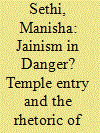

|
|
|
|
|
| Summary/Abstract |
A bitter debate broke out in the Digambar Jain community in the middle of the twentieth century following the passage of the Bombay Harijan Temple Entry Act in 1947, which continued until well after the promulgation of the Untouchability (Offences) Act 1955. These laws included Jains in the definition of ‘Hindu’, and thus threw open the doors of Jain temples to formerly Untouchable castes. In the eyes of its Jain opponents, this was a frontal and terrible assault on the integrity and sanctity of the Jain dharma. Those who called themselves reformists, on the other hand, insisted on the closeness between Jainism and Hinduism. Temple entry laws and the public debates over caste became occasions for the Jains not only to examine their distance—or closeness—to Hinduism, but also the relationship between their community and the state, which came to be imagined as predominantly Hindu. This article, by focusing on the Jains and this forgotten episode, hopes to illuminate the civilizational categories underlying state practices and the fraught relationship between nationalism and minorities.
|
|
|
|
|
|
|
|
|
|
|
|
|
|
|
|
| 9 |
ID:
154553
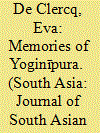

|
|
|
|
|
| Summary/Abstract |
This paper discusses the lengthy eulogies (praśasti) framing the Apabhraṃśa-language compositions of Raïdhū, a Digambara Jaina from early-fifteenth-century Gwalior. In these praśastis, the patron of the work, his family and their noteworthy deeds are immortalised by the poet. Many of these patrons, all of them merchants, had ancestors living in Delhi, here named Yoginīpura, who seem to have migrated to Gwalior and elsewhere around the time of Timur's sack of Delhi in 1398. Despite its frequent mention, Yoginīpura itself is nowhere described by Raïdhū, possibly in order to avoid stirring up memories of Timur's onslaught just decades prior.
|
|
|
|
|
|
|
|
|
|
|
|
|
|
|
|
| 10 |
ID:
132269
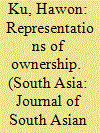

|
|
|
|
|
| Publication |
2014.
|
| Summary/Abstract |
This article explains the changes found in patas (cloth paintings) depicting Shatrunjaya, which were produced for Shvetambara Murtipujak Jains during the nineteenth century in Gujarat. These patas differed from earlier tirtha patas in that they were much larger and depicted Shatrunjaya as the central subject matter. They were also meticulous in depicting the topographical and architectural features of the site, and included Palitana, the adjacent town ruled by the Hindu Thakur. The emergence of the site as a centre for Jain pilgrimage, as well as changes in Jain perceptions of the site, led to these transformations
|
|
|
|
|
|
|
|
|
|
|
|
|
|
|
|
| 11 |
ID:
183488
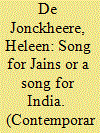

|
|
|
|
|
| Summary/Abstract |
This research note studies the interaction of religiosity and national sentiment on the popular level of Jainism in dealing with the COVID-19 crisis. It does so through a case study of a Jain popular song, which was created as a response to the everyday impact of the COVID-19 virus in India. The article will analyse the song's YouTube video, its lyrics, reception and social media adaptation, to illustrate how the Jain religious interpretation of a health crisis intersects with national discourse. It will also illuminate how such popularising interpretation, through its afterlife, was co-opted within a narrative of national culture.
|
|
|
|
|
|
|
|
|
|
|
|
|
|
|
|
| 12 |
ID:
121947
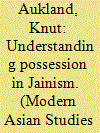

|
|
|
|
|
| Publication |
2013.
|
| Summary/Abstract |
Possession among Jains remains an almost unexplored field of study. Based on fieldwork at a Jain pilgrimage site in India, this paper presents ethnographical material on a hitherto unknown oracular possession cult. The paper looks at the ways in which Jains themselves understand and sometimes critique possessions, as a way of understanding Jainism itself. The ethnographic material is presented on the background of other cases of Jain possession, both in scriptures and other accounts, in an attempt to show how possessions challenge our understanding of Jainism as a religion. Furthermore, possession is not one thing. There are various types of possession-depending for instance on who possesses-and they have different implications in the Jain scheme of things.
|
|
|
|
|
|
|
|
|
|
|
|
|
|
|
|
| 13 |
ID:
027634
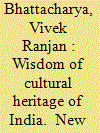

|
|
|
|
|
| Publication |
New Delhi, Metropolitan Book Co. Pvt. Ltd., 1989.
|
| Description |
xiv, 472p.hbk
|
| Standard Number |
8120002822
|
|
|
|
|
|
|
|
|
|
|
|
Copies: C:1/I:0,R:0,Q:0
Circulation
| Accession# | Call# | Current Location | Status | Policy | Location |
| 030822 | 954.01/BHA 030822 | Main | On Shelf | General | |
|
|
|
|
|
|
|
|
|